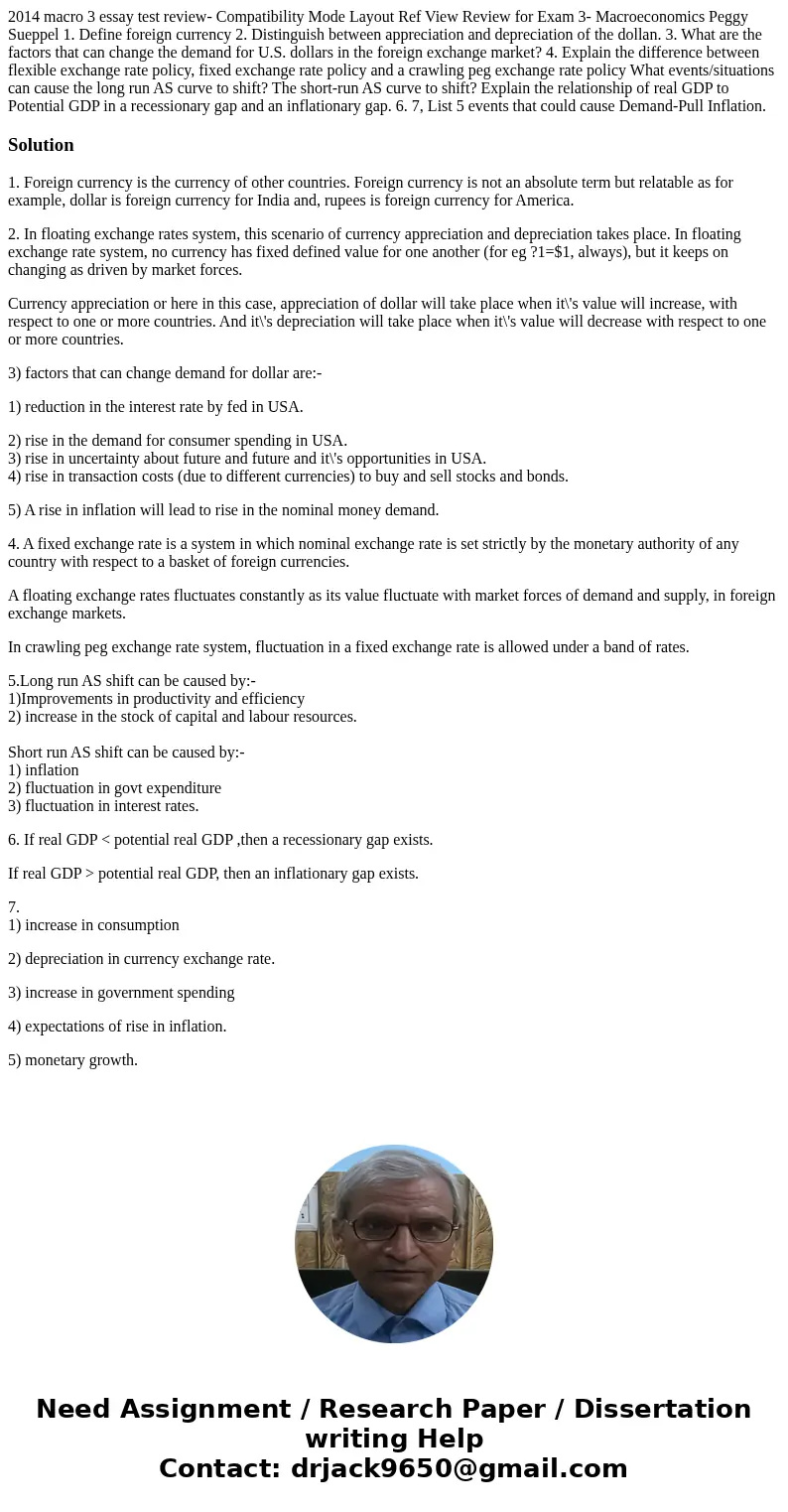2014 macro 3 essay test review Compatibility Mode Layout Ref
Solution
1. Foreign currency is the currency of other countries. Foreign currency is not an absolute term but relatable as for example, dollar is foreign currency for India and, rupees is foreign currency for America.
2. In floating exchange rates system, this scenario of currency appreciation and depreciation takes place. In floating exchange rate system, no currency has fixed defined value for one another (for eg ?1=$1, always), but it keeps on changing as driven by market forces.
Currency appreciation or here in this case, appreciation of dollar will take place when it\'s value will increase, with respect to one or more countries. And it\'s depreciation will take place when it\'s value will decrease with respect to one or more countries.
3) factors that can change demand for dollar are:-
1) reduction in the interest rate by fed in USA.
2) rise in the demand for consumer spending in USA.
3) rise in uncertainty about future and future and it\'s opportunities in USA.
4) rise in transaction costs (due to different currencies) to buy and sell stocks and bonds.
5) A rise in inflation will lead to rise in the nominal money demand.
4. A fixed exchange rate is a system in which nominal exchange rate is set strictly by the monetary authority of any country with respect to a basket of foreign currencies.
A floating exchange rates fluctuates constantly as its value fluctuate with market forces of demand and supply, in foreign exchange markets.
In crawling peg exchange rate system, fluctuation in a fixed exchange rate is allowed under a band of rates.
5.Long run AS shift can be caused by:-
1)Improvements in productivity and efficiency
2) increase in the stock of capital and labour resources.
Short run AS shift can be caused by:-
1) inflation
2) fluctuation in govt expenditure
3) fluctuation in interest rates.
6. If real GDP < potential real GDP ,then a recessionary gap exists.
If real GDP > potential real GDP, then an inflationary gap exists.
7.
1) increase in consumption
2) depreciation in currency exchange rate.
3) increase in government spending
4) expectations of rise in inflation.
5) monetary growth.

 Homework Sourse
Homework Sourse